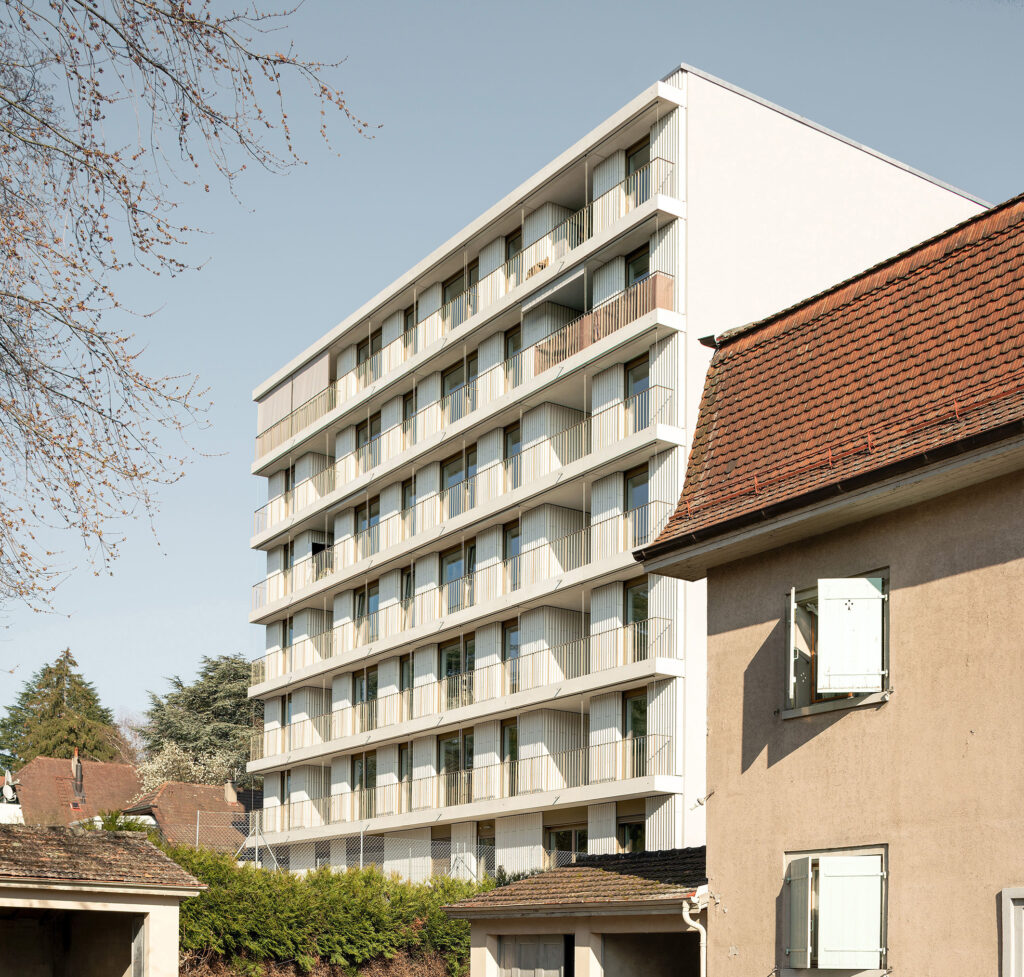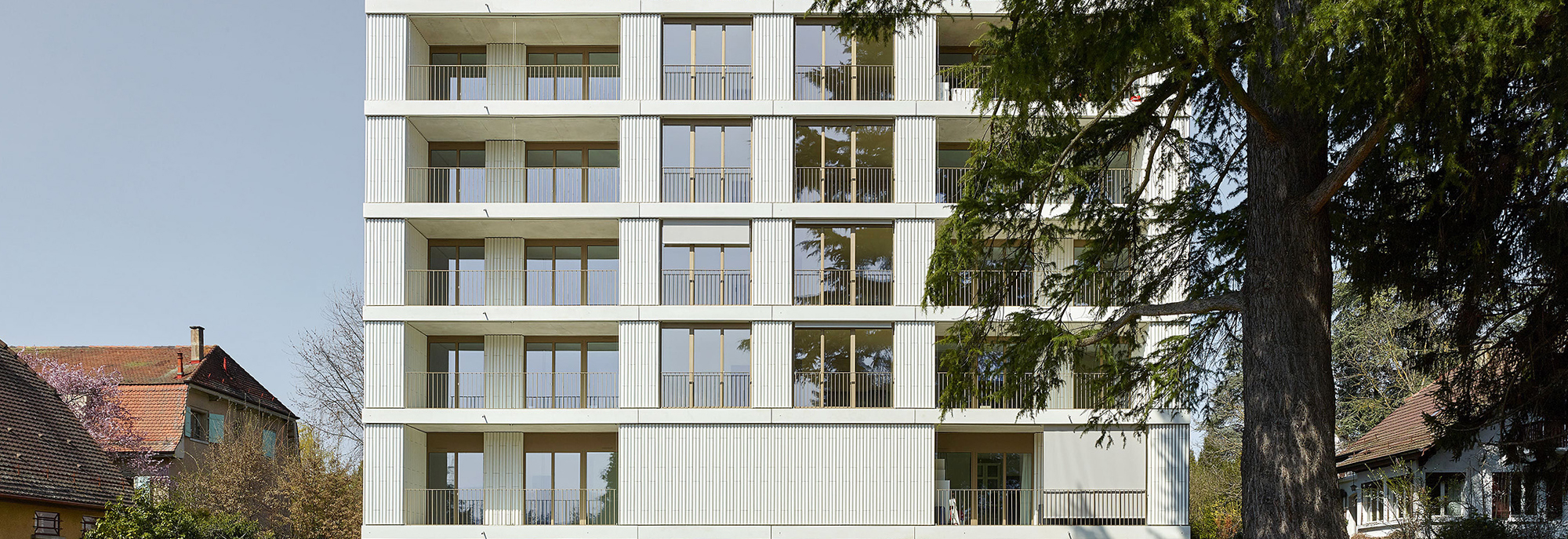
Le Mervelet, Geneva
The Geneva neighborhood of Le Mervelet, previously characterized by detached villas, is gradually being densified. Here, the housing cooperative Les Ailes has realized a compact residential building with 26 units that sets a distinct architectural accent with its white ceramic façade. By incorporating an ice storage system, the project also contributes to energy-efficient construction.
Coopérative d'Habitation "Les Ailes"
2019
Direct comission
Thomas Jantscher
Residential accommodation
Geneva, Schweiz
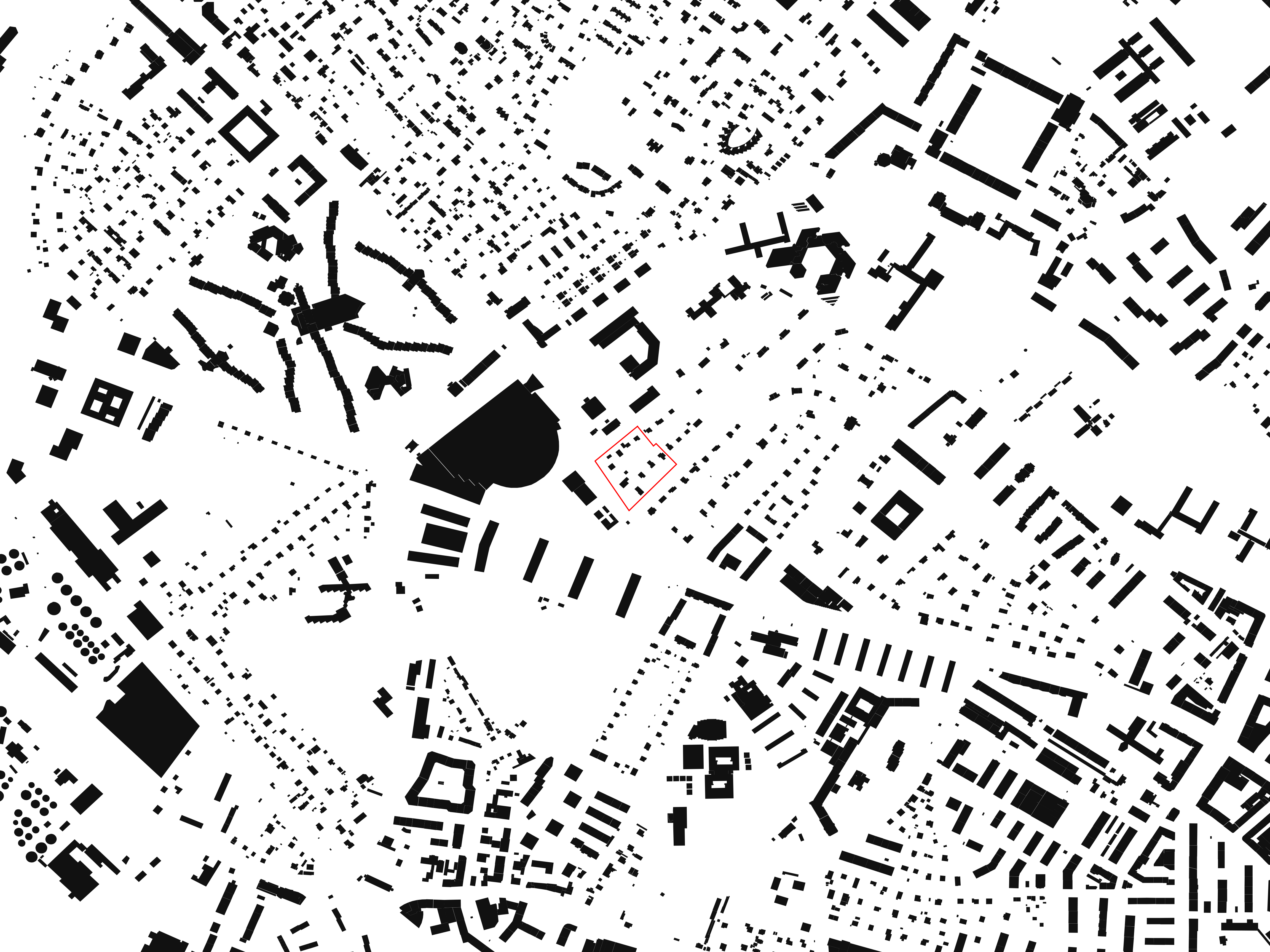
Between retreat and public life
Set back generously from the street, the building creates a spacious green threshold, marked by an old cedar tree. A double-height entrance hall connects the inside and outside spaces. The result is a structure that translates the spatial generosity of the surrounding villas into a denser context.
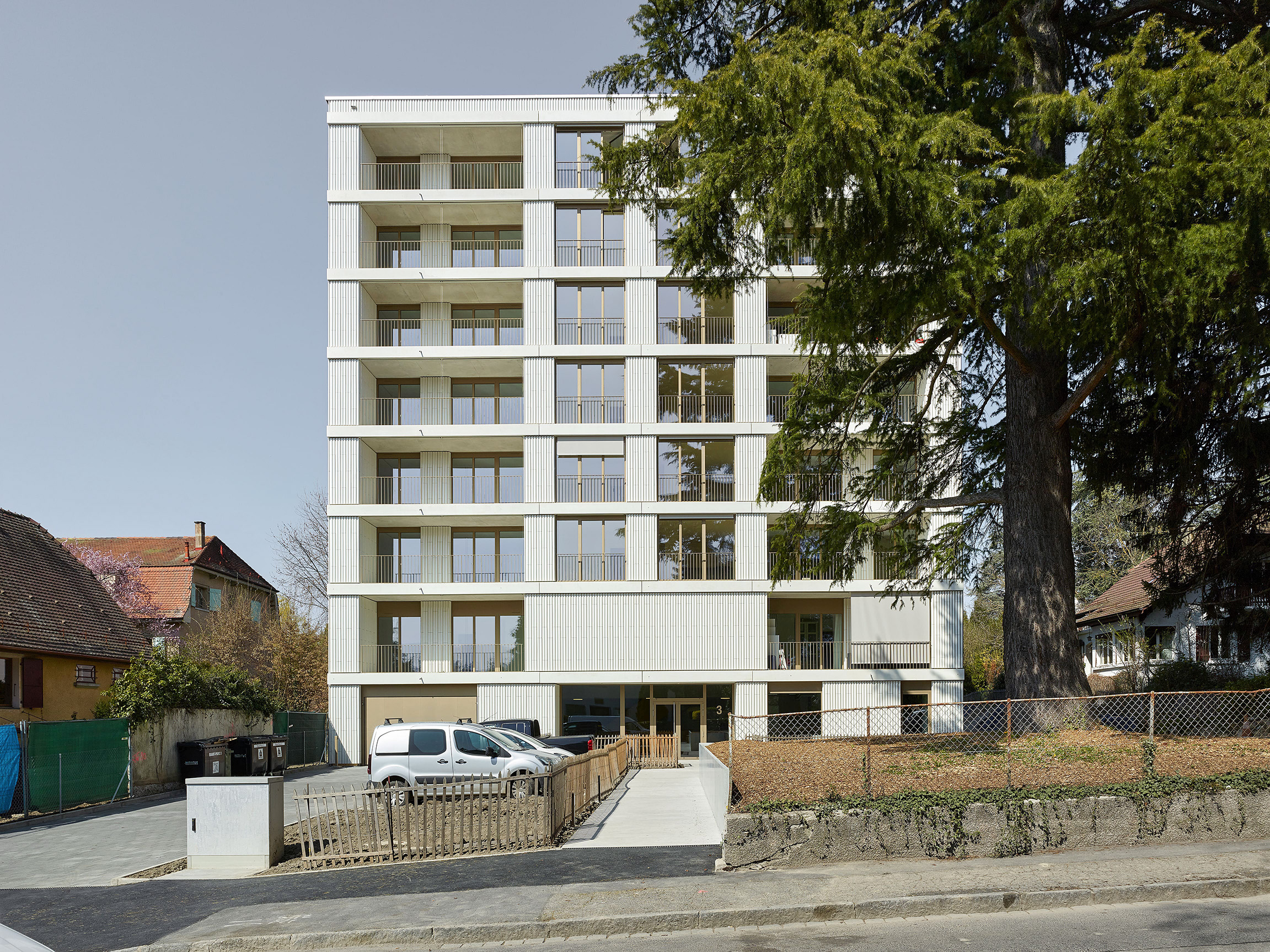
Materiality
The ventilated façade is clad in white glazed ceramic elements, whose softly curved profiles create depth and reflections of light. Depending on the time of day, the sun’s path and the silhouette of the cedar are mirrored on the surface, reinforcing a lively connection with the surroundings.
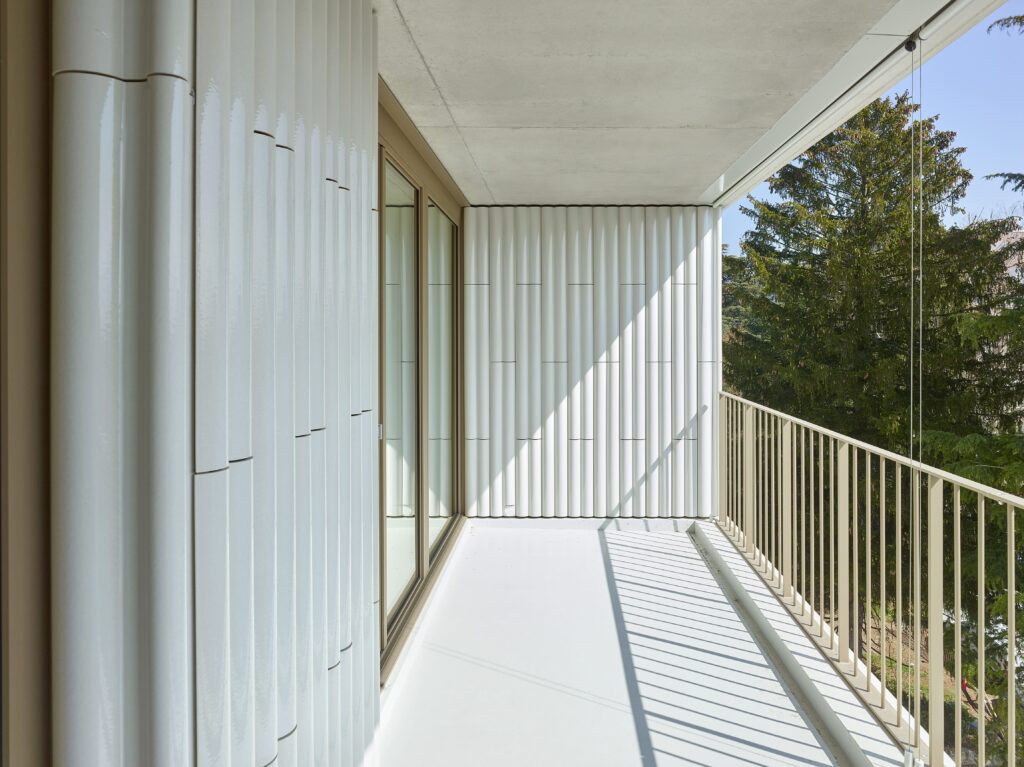
Layout
The building follows a simple, functional organization: a central core serves four apartments per floor – two through-units and two single-aspect units, each with generous balconies or loggias.

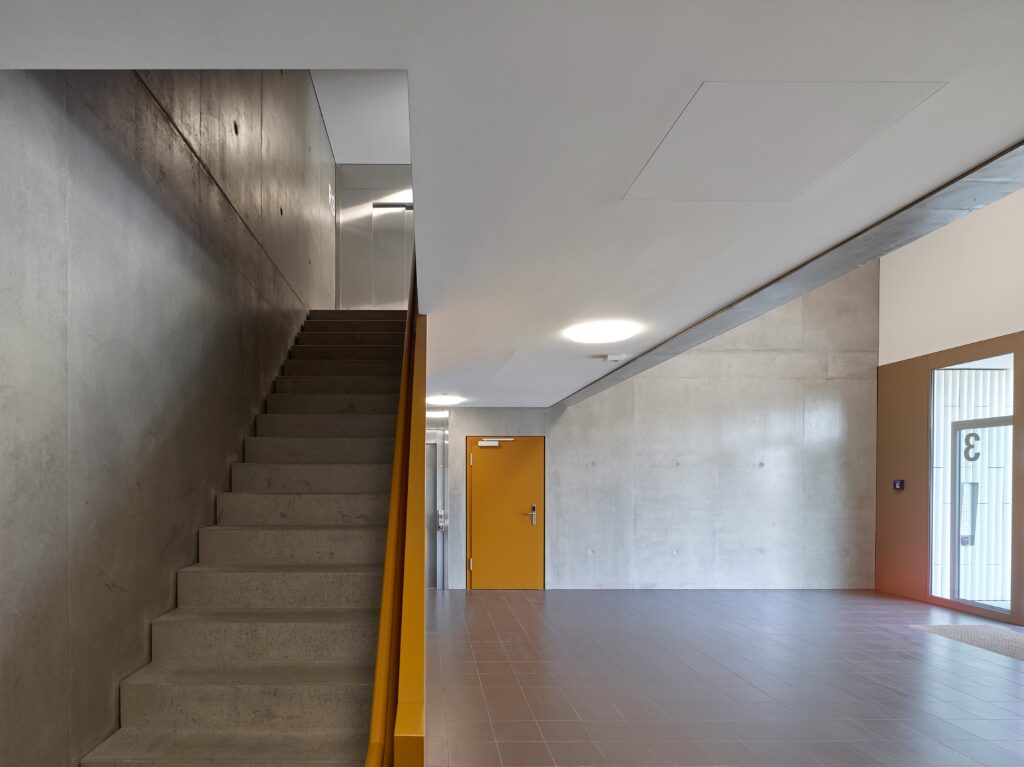
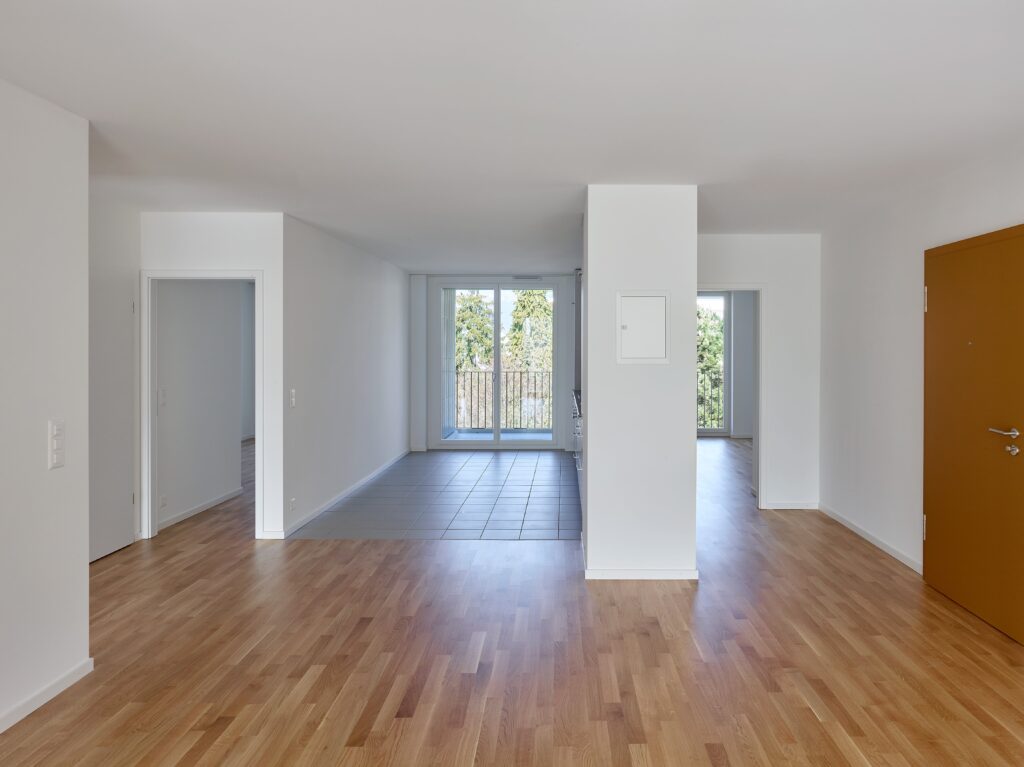
Ice-Sol: Energy from the sun and ice
For the first time in a Geneva multi-family building, the Ice-Sol system has been applied. This hybrid heating method combines solar energy with the latent heat stored in water.
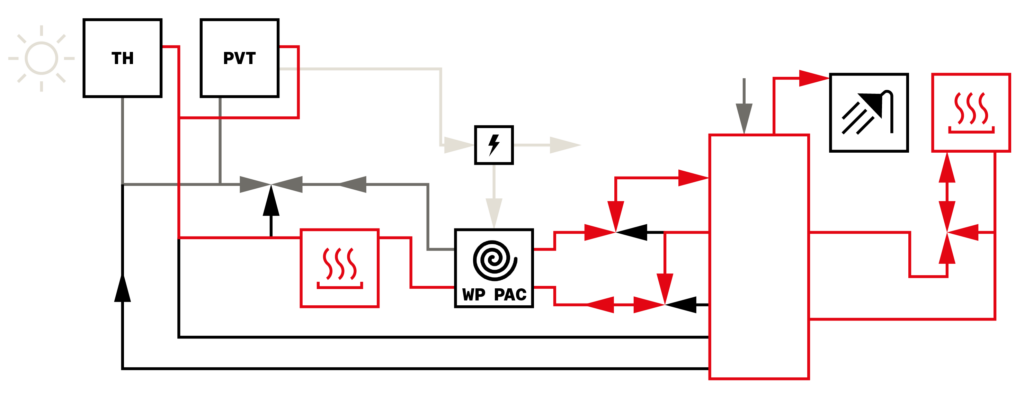
Ice store in the morning, rising temperature
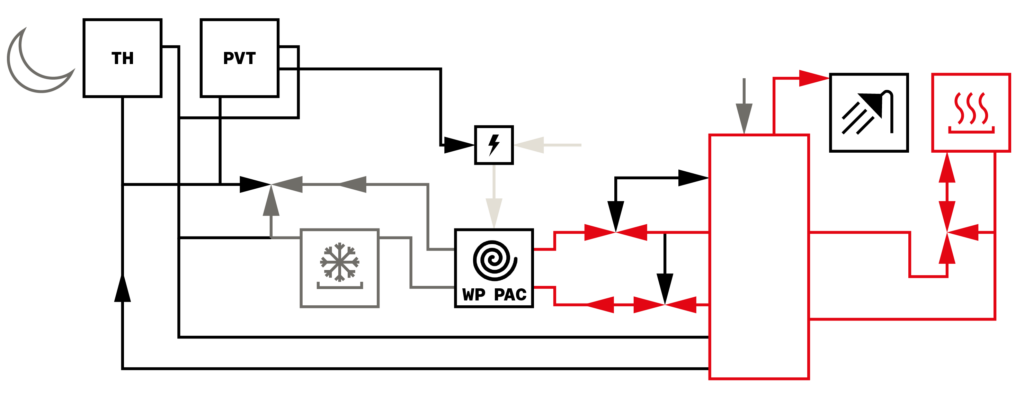
Ice storage during the night
It consists of three main components:
- An uncovered solar thermal collector
- A water-to-water heat pump
- A central ice storage tank
During the warmer months, solar energy alone covers nearly all heating and hot water needs, leaving the heat pump inactive. In the colder season, the heat pump draws on the energy released when the water in the storage tank freezes. Once sufficient solar input returns, the ice melts and the cycle begins again – efficient and with minimal losses.
